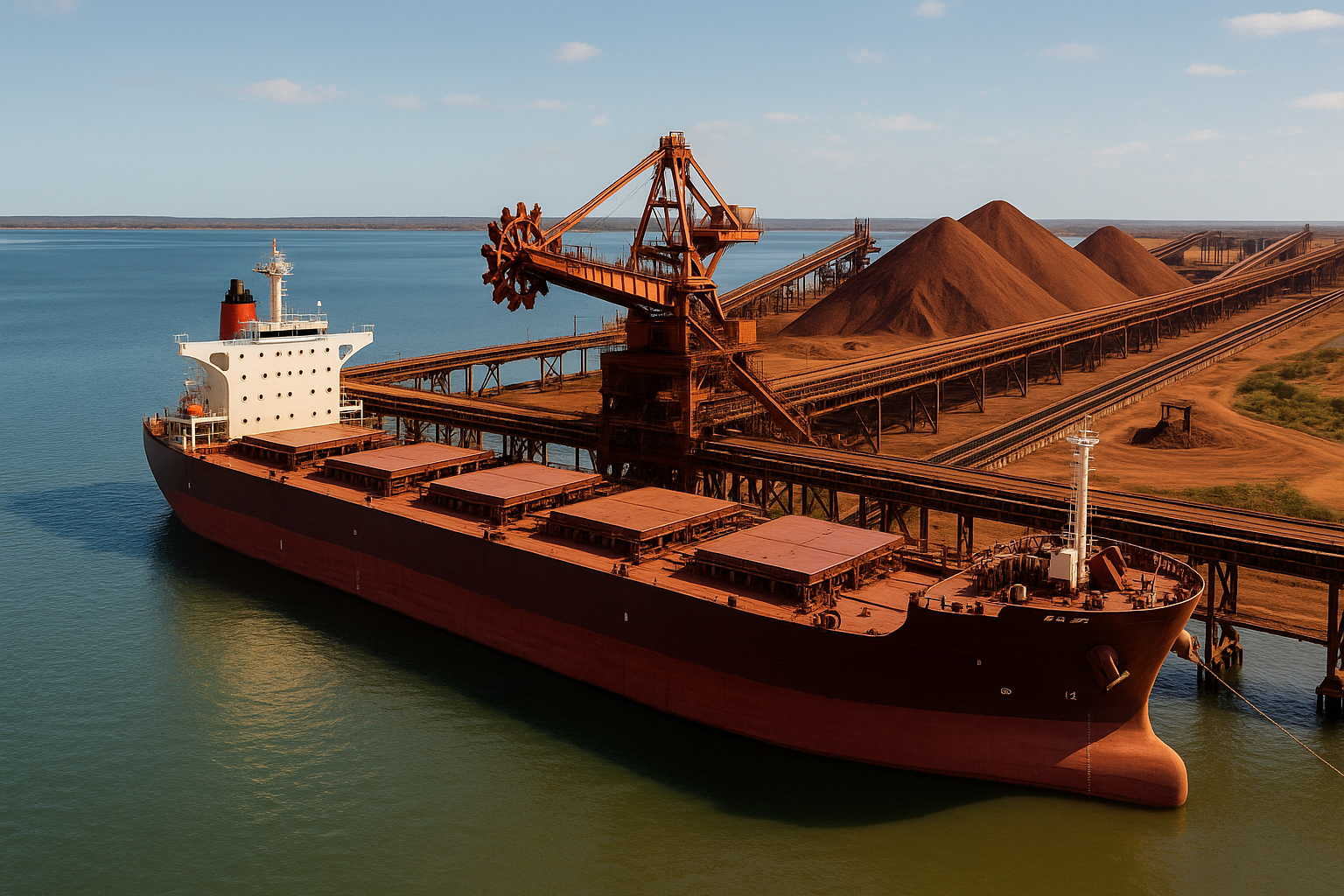30/07/2025
“Surging Global Demand and Strategic Infrastructure Investments Propel Australia’s Iron Ore Export Hub to Historic Highs”
SHIPPING NEWS | 10
Australia’s Port of Hedland Sees Unprecedented Growth in Iron Ore Exports
Iron ore exports from Australia have reached unprecedented levels at the Port of Hedland, the country’s leading bulk export hub, signaling strong global demand and efficient infrastructure. This surge highlights critical factors shaping Australia’s dominance in the iron ore market, including export volumes, infrastructure upgrades, and shifting global trade dynamics.
1. Record-Breaking Export Volumes Boost Australia’s Market Position
Australia’s iron ore exports climbed to a record 883 million tonnes in 2024, a 4% increase year-on-year, largely due to increased shipments from the Port of Hedland — the world’s largest bulk export port. According to the Australian Bureau of Statistics, this volume surpasses previous highs and solidifies Australia’s position as the world’s largest iron ore exporter.
China remains the largest importer, accounting for over 60% of Australia’s iron ore exports. In addition, Japan and South Korea contribute significant demand, underpinning steel production critical to their manufacturing sectors.
2. Infrastructure Upgrades at the Port of Hedland Enable Greater Throughput
The Port of Hedland underwent significant infrastructure enhancements, including berth deepening and automated ship loaders, allowing it to handle up to 1 billion tonnes annually. These upgrades have reduced vessel waiting times by approximately 15%, according to Port of Hedland’s official reports.

“AUSTRALIA CEMENTS ITS GLOBAL DOMINANCE AS IRON ORE EXPORTS HIT RECORD HIGHS AT PORT OF HEDLAND IN 2025”
